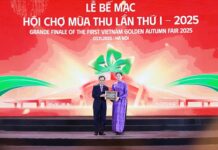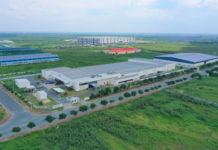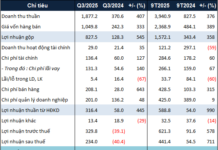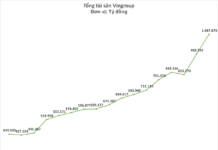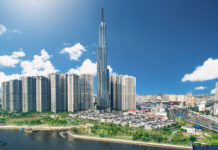By 2030, Vietnam Will Have 13 Centrally-Governed Cities
The Prime Minister has issued Decision No. 891/QD-TTg approving the Master Plan for Urban and Rural Development for the period 2021 – 2030, with a vision towards 2050.
According to the plan, there are currently 5 centrally-governed cities: Hanoi, Ho Chi Minh City, Haiphong, Can Tho, and Danang (expected to become a first-tier city by 2030).
By 2030, 8 more provinces are oriented to become centrally-governed cities: Thua Thien Hue, Khanh Hoa, Bac Ninh, Ba Ria – Vung Tau, Quang Ninh, Ninh Binh, Hai Duong, and Binh Duong (also expected to be first-tier cities by 2030). This will bring the total number of centrally-governed cities in Vietnam to 13.
The master plan lists 42 first-tier cities, including 11 in the Red River Delta, 5 in the Northern Midland and Mountainous regions, 7 in North Central and Central Coastal regions, 3 in the Central Highlands, 5 in the Southeast region, and 11 in the Mekong Delta.

Hanoi. Photo: Communist Party of Vietnam Online Newspaper
By 2050, Vietnam’s urban system is envisioned to be a well-connected, integrated, and balanced network across regions, with resilience and adaptability to climate change, sea-level rise, natural disasters, and epidemics. It will feature environmentally-friendly, green, modern, and smart cities with distinctive architecture, and a worthy position in the Asia-Pacific urban network, as well as high competitiveness in national, regional, and international socio-economic development.
The goal is to have at least 5 cities of international stature, serving as hubs for regional and international connections. The urban economy will be oriented towards modern sectors, with a focus on green and digital industries.
The urbanization rate is targeted to reach over 50% by 2030 and 70% by 2050. The country is expected to have around 1,000-1,200 cities, including several national and regional urban centers with advanced standards in healthcare, education, and culture, comparable to the average level of the top 4 ASEAN countries. The urban economy will contribute about 85% to the national GDP, with a network of smart cities at the national and regional levels, and 3-5 cities with regionally and internationally recognized brands by 2030.
The master plan also sets out goals for rural areas, aiming for a closely connected and harmonious environment with urban areas, featuring a civilized, green, clean, and beautiful landscape rich in ethnic cultural identity, with rural living conditions and incomes approaching those of urban areas.
By 2030, at least 90% of communes are expected to meet the new rural standards, with 50% achieving advanced new rural standards. The country aims for about 70% of districts, provincial cities, and towns to meet new rural standards and complete new rural development tasks, with 35% of districts recognized as advanced new rural or new rural model districts. It is also expected that 100% of districts will have urban areas.
Hanoi and Ho Chi Minh City – Special Category Cities
The master plan emphasizes the development of Hanoi and Ho Chi Minh City, along with other centrally-governed cities, into dynamic, creative, and leading urban areas that drive regional linkages and play a significant role in the Southeast Asian and Asian urban networks. Large-scale urban planning is associated with public transport (TOD), focusing on underground space exploitation and the development of satellite towns to reduce pressure on central areas.

Ho Chi Minh City. Photo: Financial Times
Notably, according to the plan, Hanoi and Ho Chi Minh City are expected to become special category cities by 2030.
Special category cities are either the capital or central hubs of the nation and play a crucial role in various sectors such as economics, finance, culture, education, tourism, healthcare, science, and technology. They also serve as vital transportation hubs for domestic and international connections. To qualify as a special category city, certain criteria must be met regarding population, labor force composition, infrastructure development, and urban architecture and landscape.
A special category city should have a total population of at least 5 million people, with the inner city area hosting at least 3 million. Population density for the entire city should be at least 3,000 people/km2, while the inner city area, calculated based on urban land area, should have a density of at least 12,000 people/km2. The non-agricultural labor force in the special category city should account for at least 70% of the total labor force, with the inner city area reaching at least 90%.
Will Vietnam’s Rice Exports Break Records Again This Year?
With production and prices on the rise, Vietnam’s rice industry is optimistic about its export prospects. The industry is hopeful that it will once again reach the impressive milestone of exporting approximately 8 million tons of rice, bringing in a substantial revenue of over $5 billion.







